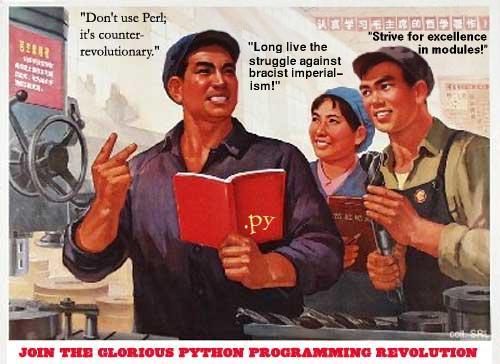Random Quote: When partisanship becomes part of your identity it has a pernicious effect: It causes you to highlight the deficiencies of the other side while tempting you to rationalize or minimize the injustices on your own. Partisanship makes hypocrites of us all. – David French
Computers
I’ve loved (and occasionally hated) computers since I bought my first one age 12 and started writing amazingly slow and buggy video games about submarines and rockets.
Operating System
I have been a Linux man since I assembled my first computer many moons ago. I’ve tried many different flavors and liked most of them. For my desktop environment I use Budgie.
Programming

As a kid I used to write in BASIC, which was so much fun. These days I mainly program in Python and sometimes use Julia.
For fun things you can do with Python and Julia, see these lectures.
I do all my text editing using neovim. I used to use Emacs but I was young and needed the money.
Another handy open source programming language is R, which in turn was developed back in the early days at Bell, along with C, the UNIX operating system, information theory, the transistor, the laser, and a few other minor contributions to world science and technology.
Machine Learning
I’m interested in machine learning. The machine learning problem is one of associating an output with a given set of inputs. One component of the problem is selection of a hypothesis space, which is a suitable collection of candidate mappings from the input to the output space. The second component is a learning algorithm, which takes training data as an input and returns a mapping from the hypothesis space that represents a proposed functional relationship between inputs and outputs. The task of the system designer is to implement this search through the hypothesis space with the objective of finding a mapping which optimizes the ability of the machine to generalize, i.e., to give the “right” output for an arbitrary set of inputs.
Statistical learning theory provides a principled approach to optimization of the generalization ability. The Ayatolla of statistical learning theory is V.N. Vapnik.
Here’s a nice quote from Vapnik:
I believe that something drastic has happened in computer science and machine learning. Until recently, philosophy was based on the very simple idea that the world is simple. In machine learning, for the first time, we have examples where the world is not simple. For example, when we solve the “forest” problem (which is a low-dimensional problem) and use data of size 15,000 we get 85%-87% accuracy. However, when we use 500,000 training examples we achieve 98% of correct answers. This means that a good decision rule is not a simple one, it cannot be described by a very few parameters. This is actually a crucial point in approach to empirical inference.
This point was very well described by Einstein who said “when the solution is simple, God is answering”. That is, if a law is simple we can find it. He also said “when the number of factors coming into play is too large, scientific methods in most cases fail”. In machine learning we dealing with a large number of factors. So the question is what is the real world? Is it simple or complex? Machine learning shows that there are examples of complex worlds. We should approach complex worlds from a completely different position than simple worlds. For example, in a complex world one should give up explain-ability (the main goal in classical science) to gain a better predict-ability.